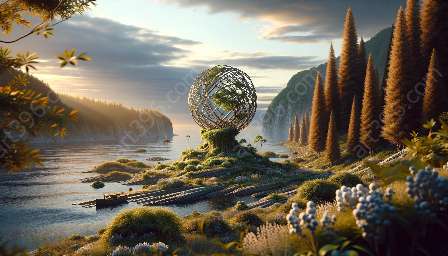Environmental sculpture projects play a crucial role in enhancing the interaction between art, nature, and society. As a form of environmental art, these projects are designed to engage the public, inspire environmental stewardship, and promote sustainability. In this comprehensive guide, we will delve into the significance of public engagement in environmental sculpture projects, exploring its relevance to the broader context of environmental art.
Understanding Environmental Sculpture
Environmental sculpture, also known as land art or earth art, refers to the practice of creating artistic interventions in natural or urban landscapes. These interventions can take various forms, such as site-specific installations, sculptures, or performances that interact with the environment. Unlike traditional art forms, environmental sculpture often utilizes natural materials and integrates with the surrounding ecosystem, blurring the boundaries between art and nature.
The Role of Public Engagement
Public engagement is integral to the success of environmental sculpture projects. By involving the community in the creation and appreciation of these artworks, artists can foster a sense of ownership and connection to the environment. This involvement can range from participatory workshops and collaborative design processes to interactive exhibitions and public art events. Public engagement not only enhances the accessibility of environmental sculptures but also encourages dialogue and reflection on environmental issues.
Community Involvement and Sustainable Practices
Environmental sculpture projects often prioritize sustainability and ecological consciousness. Through public engagement, artists can incorporate local knowledge and resources, fostering a deeper understanding of environmental issues and solutions within the community. Furthermore, community involvement enables the implementation of sustainable methods and materials, demonstrating a commitment to environmental stewardship and responsible art practices.
Education and Awareness
Public engagement in environmental sculpture projects serves as a platform for environmental education and awareness. By interacting with these artworks, the public can gain insights into ecological processes, environmental conservation, and the interconnectedness of art and nature. In this context, environmental sculptures become powerful tools for sparking conversations, raising awareness, and promoting environmental literacy.
Integration of Environmental and Social Contexts
Public engagement in environmental sculpture projects fosters a dynamic relationship between art, the environment, and society. Artists have the opportunity to address local or global environmental issues, cultural heritage, and social dynamics through their work. By involving diverse audiences in the creation and interpretation of environmental sculptures, the projects can reflect the values, narratives, and aspirations of the community, contributing to a more inclusive and socially relevant art practice.
Conclusion
Public engagement plays a multifaceted role in environmental sculpture projects, enriching the artistic process, fostering sustainability, and promoting community involvement. By integrating environmental and social concerns, these projects become catalysts for positive change, inspiring dialogue, and enhancing the collective relationship with the environment. Through ongoing public engagement, environmental sculpture projects can continue to evolve as an impactful form of environmental art, creating meaningful experiences that connect art, nature, and society.

